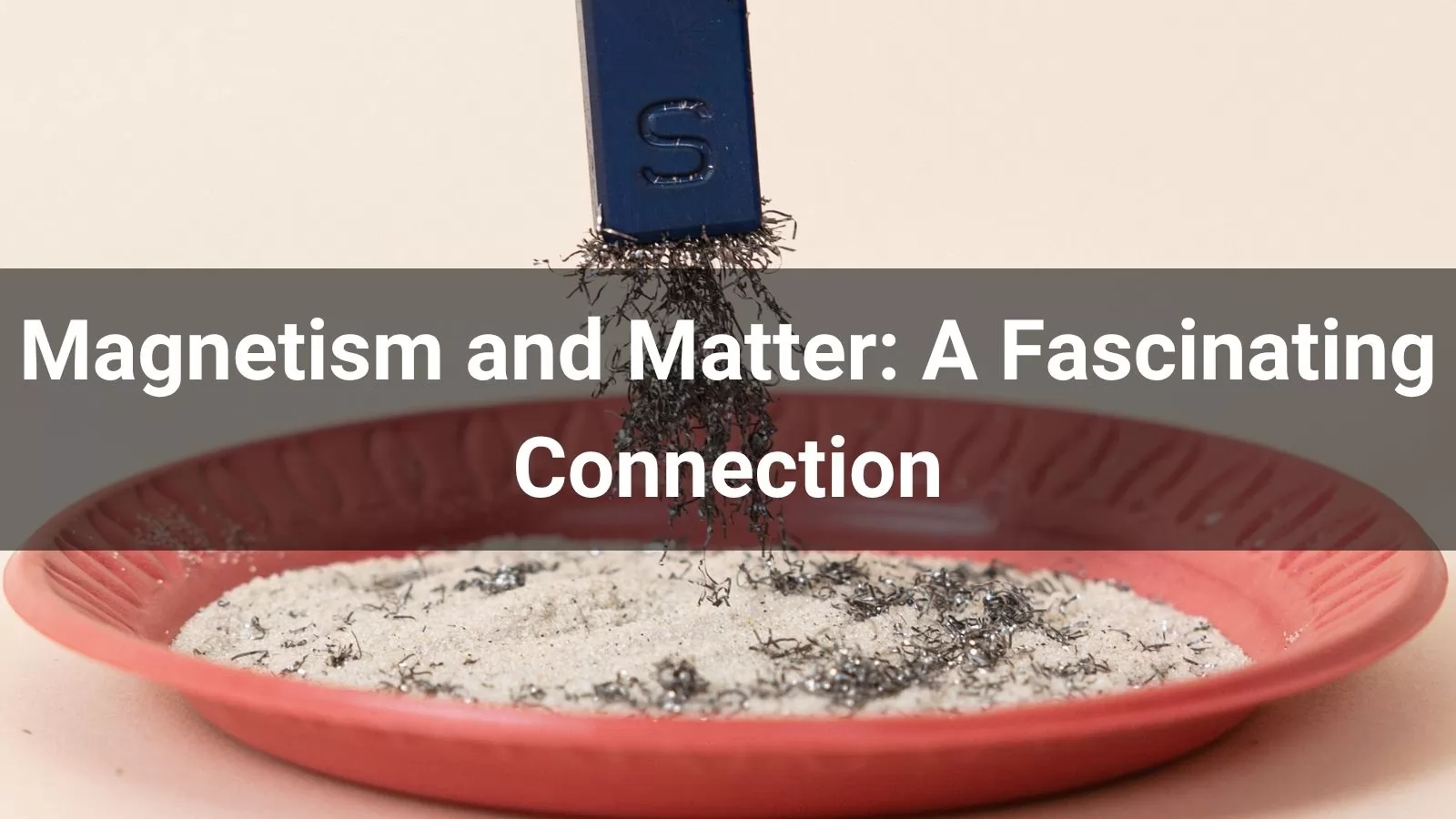Magnetism and Matter: A Fascinating Connection

Magnetism is a force that has intrigued humans for centuries, from the ancient discovery of lodestones to modern technologies like MRI machines and electric motors. At its core, magnetism is a physical phenomenon produced by the movement of electric charges, resulting in forces that can attract or repel objects. But how does magnetism relate to matter, the stuff that makes up everything around us? This article explores the nature of magnetism, its interaction with matter, and its role in our world, in a way that’s accessible to all.
What is Magnetism?
Magnetism is a force generated by moving electric charges, typically electrons. It manifests as magnetic fields, invisible regions of influence that exert forces on other magnetic objects or moving charges. Imagine a bar magnet with a north and south pole: it can pull iron filings toward it or push another magnet away. This force arises because electrons within the magnet’s atoms are aligned in a way that creates a unified magnetic field.
Magnetic fields are not just limited to magnets. They are produced by electric currents, like those flowing through a wire, or even by the Earth itself, which acts like a giant magnet with its own magnetic field. This field guides compasses and protects our planet from harmful solar radiation. Magnetism is one of the four fundamental forces of nature, alongside gravity, electromagnetism (of which magnetism is a part), and the strong and weak nuclear forces.
What is Matter?
Matter is anything that has mass and occupies space. It’s the building block of the universe, from the air we breathe to the stars in the sky. Matter is made up of atoms, which consist of a nucleus (containing protons and neutrons) surrounded by a cloud of electrons. These subatomic particles are key to understanding how matter interacts with magnetism, as electrons play a central role in magnetic phenomena.
Matter exists in various states—solid, liquid, gas, and plasma—and its properties depend on how its atoms are arranged and how their electrons behave. Some materials, like iron, respond strongly to magnetic fields, while others, like wood or plastic, seem unaffected. This difference lies in the atomic structure of the material and how its electrons are configured.
How Magnetism Interacts with Matter
The interaction between magnetism and matter depends on the material’s properties, which can be classified into three main categories: ferromagnetic, paramagnetic, and diamagnetic.
Ferromagnetic materials, such as iron, nickel, and cobalt, are strongly attracted to magnets. In these materials, electrons are organized in such a way that their tiny magnetic fields (produced by their spin and movement) align to create a strong, unified magnetic field. This alignment can persist even after an external magnetic field is removed, making ferromagnetic materials ideal for permanent magnets, like those on your fridge.
Paramagnetic materials, like aluminum or magnesium, are weakly attracted to magnetic fields. Their electrons don’t naturally align, but when exposed to a magnetic field, they temporarily adjust to produce a weak magnetic response. This effect disappears once the external field is gone.
Diamagnetic materials, such as water, copper, or bismuth, are slightly repelled by magnetic fields. In these materials, electrons adjust their motion in the presence of a magnetic field, creating a weak opposing field. This property is subtle but can be observed in experiments, like when a piece of graphite levitates above a strong magnet.
The way matter responds to magnetism is rooted in the behavior of electrons. In ferromagnetic materials, electrons form regions called domains, where their magnetic fields point in the same direction. Applying an external magnetic field can align these domains, magnetizing the material. In contrast, diamagnetic materials have no such domains, and their electrons resist external fields, leading to repulsion.
Magnetism in Everyday Life
Magnetism’s interaction with matter is not just a scientific curiosity—it shapes our daily lives. In technology, magnetic materials are crucial for hard drives, where tiny magnetic regions store data, and in electric motors, where magnetic fields drive motion. MRI machines use powerful magnets to align the hydrogen atoms in our bodies, creating detailed images for medical diagnosis. Even credit cards rely on magnetic strips to store information.
In nature, Earth’s magnetic field, generated by molten iron in its core, shields us from solar wind, a stream of charged particles from the Sun. This field also enables animals like birds and turtles to navigate using magnetic cues. In industry, magnets are used to separate metals in recycling plants or to lift heavy steel objects in construction.
The Science Behind Magnetism and Matter
At the atomic level, magnetism arises from two properties of electrons: their spin (a quantum property that acts like a tiny magnet) and their orbital motion around the nucleus. In most materials, these tiny magnetic moments cancel out, resulting in no net magnetism. But in ferromagnetic materials, the moments align, amplifying the effect. This alignment can be disrupted by heat or physical shock, which is why heating a magnet can weaken it.
Quantum mechanics further explains magnetism’s quirks. For example, the Pauli exclusion principle ensures electrons arrange themselves in ways that influence magnetic properties. In advanced research, scientists explore phenomena like superconductivity, where certain materials, when cooled, exhibit zero electrical resistance and expel magnetic fields entirely—a striking interaction between matter and magnetism.
Why It Matters
Understanding how magnetism interacts with matter unlocks countless possibilities. It drives innovations in renewable energy, like wind turbines, and enables technologies like maglev trains, which levitate using magnetic repulsion. It also deepens our understanding of the universe, from the magnetic fields of distant stars to the behavior of subatomic particles.
For the curious mind, magnetism offers a window into the invisible forces that shape our world. Whether it’s a compass pointing north or a smartphone storing your photos, the dance between magnetism and matter is all around us, quietly powering our lives.
Contact us now, Get more information and a quote!
Read more:
Top 10 Magnet Manufacturers in Europe 2025

